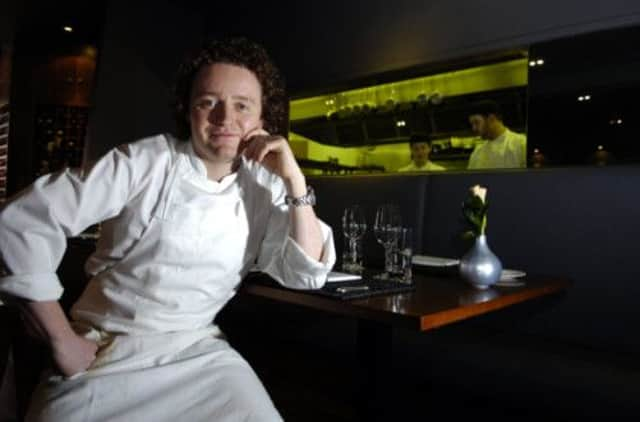Tom Kitchin: Rum Baba recipe


Some of the best are premium dark rums, which are usually drunk straight with ice or used in cooking. Dark rums are best for cooking as they add most depth of flavour. They are typically aged for longer, often in charred barrels, which gives them their colour and a stronger flavour. You will also pick up more hints of spice with these darker rums, which can often balance out the sweetness.
At the Kitchin, we use a lovely Guatemalan rum – the Ron Zacapa – in our cooking. It’s made using virgin sugar cane honey, which gives it a sweeter, balanced flavour, and it is aged in cask barrels, which adds complexity that can really bring a dish to life. The rum is matured at 2,300 metres above sea level, below the upper slopes of the mountains and volcanoes of Guatemala – they say this is what adds to its complex and delightful flavour. But there are a number of other rums you can find that are made with equal amounts of care, heritage and passion as this one.
Advertisement
Hide AdAdvertisement
Hide AdCooking with rum has similarities to cooking with other liquors or wines. The alcohol will burn off, leaving you with a lovely added flavour from the spirit. Rum works particularly well in desserts because it brings such sweetness to the dishes, thanks to its base of sugar cane or molasses. We use it in a number of our sweet dishes – in chocolate cake to add flavour, for marinating or macerating fruits and even in ice-cream.
Not only is it a great addition to desserts, it can really add flavour to some savoury meals.It is mellow, warm and spicy, so lends itself well to a whole host of dishes. It’s used often in Caribbean-style food and compliments chicken, meat and seafood beautifully.
One of my favourite rum dishes has to be rum babas – or baba au rhum. The original baba was introduced in France in the 18th century. It is a classic dish that I learnt to make during my time in Monaco with Alain Ducasse. I have since given it my own Scottish twist by adding whisky, but I still adore the classic recipe.
At Chef Ducasse’s restaurant at the Dorchester, in London, rum baba is one of the signature dishes. Today, if you order it, you will be presented with a rum trolley and can choose which rum you want your baba to be made with.
If you’re trying some of these dishes at home, experiment with different rums and see which you like best. However, I would recommend that you don’t substitute dark, white and golden rums in recipes as their flavours can differ widely.
Rum Baba - Makes 12
8g yeast
20ml lukewarm water
250g flour
25g sugar
5g salt
4 eggs, beaten
75g butter, melted
12 x 2in dariole moulds, greased
For the syrup
500ml water
250g sugar
zest of 1 orange
zest of 1 lemon
dark rum
orange segments, to garnish
dried cranberries, to garnish
Method
Preheat the oven to 180°C/gas mark 4. Dissolve the yeast in the 20ml of lukewarm water. In a mixing bowl, combine the flour, sugar and salt and mix together. Slowly add the eggs and yeast, followed by the melted butter and mix until smooth and elastic.
Half-fill the moulds with the mixture, then cover with oiled cling-film and leave to prove in a warm area until the babas rise to the top of the moulds.
Bake the babas in the oven for 15 minutes, until golden brown, then remove and leave to cool on a wire tray.
Advertisement
Hide AdAdvertisement
Hide AdMeanwhile, to make the syrup, boil the water, sugar and orange and lemon zest, adding dark rum to your taste.
Place the babas in the rum syrup and fruit to garnish, the serve with whipped cream (and maybe a wee bit more rum).
Twitter: @TomKitchin